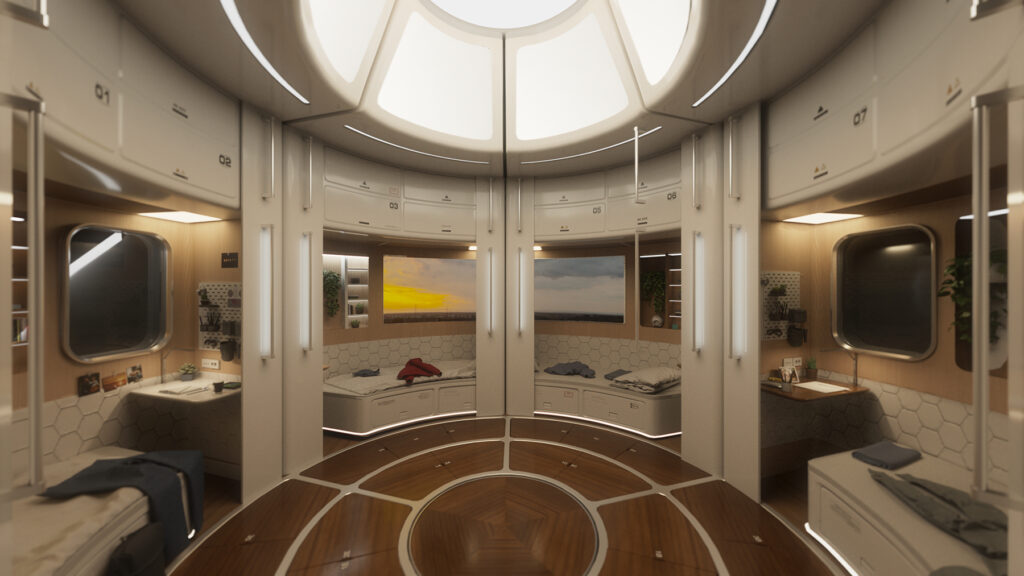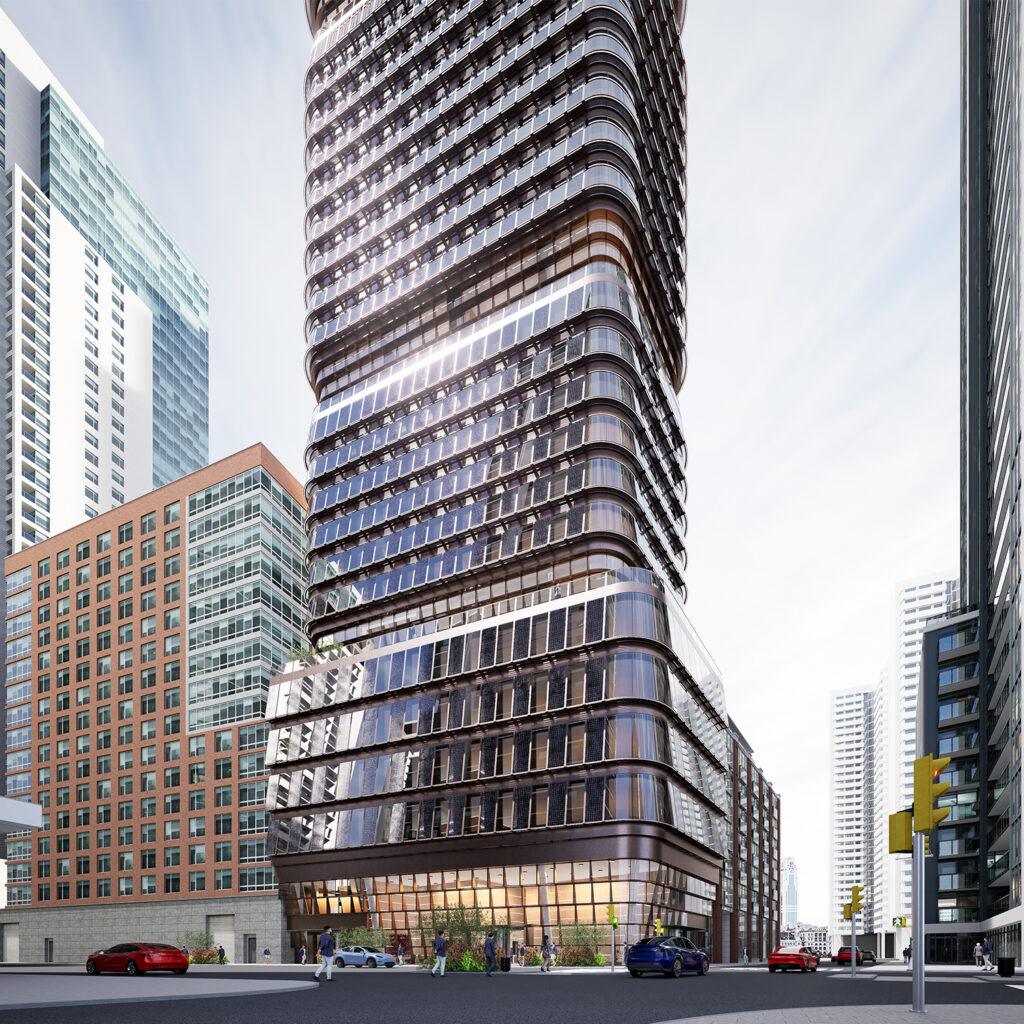For Architects, Architecture comes with a deep history of combining culture, art, function, materials, construction techniques and technologies. It is both an Art and Science, a process by which we can imagine and create the built environment. It serves humanity in profound and practical ways. It embodies our daily habits and is the physical manifestation of our aspirations for life in the future. Historically, Architecture was developed by acts of trial and error, with ancient settlements seeming organic in their organization, emerging often as a necessity to provide shelter and protection from the natural environment. As humanity gained insight and knowledge of the natural environment, and its materials and learned new methods of building, the idea of Architecture became much more methodical and intentional. Technologies were discovered through the act of building and techniques were developed that would advance the conceptualization, geometric descriptions, and representations of building forms. Architecture has gone through many movements but above all, has been shaped by social or human activities and environmental forces.
Today we see Architects, practicing design, engineering, and construction through the use of advanced manufacturing and digital technology. Technology has allowed us to tackle many of the unique challenges we now face with concerns of environmental responsibility, efficiency, and increasingly complex Architectural ideas. Architecture is now much more reliant on technology across phases from conceptual design to building operations and yet, there are still many new innovations in the realm of information technology and material science that are improving Architecture.

The role of the Architect has and continues to transform over time but at the core, it is to envision, design, and coordinate the construction of the built environment. He is responsible for organizing and integrating a variety of ideas, disciplines, systems, and products into the creation of a building. The Architect is and should be central to the orchestration of the forces acting on the ideas that emerge at the outset. By listening, absorbing, and balancing competing dynamics, the Architect brings clarity and vision. The principles of Architecture can be applied across scales, from products to buildings, transportation systems to cities, and space architecture to future settlements.
Architecture comes with many meanings but fundamentally it is the art, science and process of designing and building. Design in Architecture comes with many facets, ranging from conceptualization to the commissioning phases. In aerospace, systems engineering embodies a similar role as an interdisciplinary field that is responsible for designing, integrating and managing complex systems. This also includes the process of testing, analyzing and building aerospace systems such as vehicles for air and space transportation. Although in aerospace, the habitation function is limited in space, function and duration, there remains a relationship between the human experience and systems. There are several subsets of aerospace systems engineering but the role of Architecting has synergies with the role of a traditional Architect. In aerospace as in architecture, there are systems that are designed for human occupancy and sub-systems that serve the overall function to ensure that is safe, and functional and allows humans to perform their activities. The complexities, dynamics, and performance criteria differ greatly but at the heart of these systems is the human element.
Space Architecture takes aerospace engineering to the realm of human activity as experienced in buildings by emphasizing the requirements of habitation and a wide range of human activities. Space Architecture can be defined as the art, science and process of designing and building structures meant to be used by humans beyond Earth. Once outside of Earth, it belongs to the domain of Space Architecture whether it is destined for space or another planet. It is the significance of human activity and ensuring that habitation is possible in the hazardous extreme environments outside of Earth that makes Space Architecture so important. The responsibility of the Space Architect is then to conceptualize, formulate and integrate Space Architecture that will ultimately be used outside the protection of Earth’s atmosphere. Together with various systems engineers, manufacturers and subject matter experts, his role should be to envision, integrate and implement a design that has human activity as its core function.
For the foreseeable future, most Space Architecture systems will be designed, engineered, and built on Earth before being transported to their final destination. The systems and technologies that makeup space architecture require a high degree of precision and integration that can only be achieved in a controlled environment. Some common techniques used in the manufacturing of space habitats include:
Additive Manufacturing: This involves building up the structure of the habitat layer by layer using 3D printing techniques. This method allows for the creation of complex and irregular shapes that would be difficult to create using traditional manufacturing techniques.
Subtractive Manufacturing: This involves cutting and shaping the materials used in the habitat to create the desired shape. This method is often used for creating structural components such as beams and trusses.
Assembly: Once the individual components of the habitat have been manufactured, they are assembled to create the final structure. This can involve welding, bolting, or other forms of mechanical fastening.
Testing: Before the habitat is launched into space, it must undergo rigorous testing to ensure that it can withstand the stresses of launch and the conditions of space. This can include vibration testing, thermal testing, and vacuum testing.
Quality Control: There are many quality control checks that are done during the entire process of manufacturing of the habitat, to ensure that the final product is of high quality and meets the required standards.
Launching: Finally, the habitat is launched into space using a rocket or other launch vehicle.
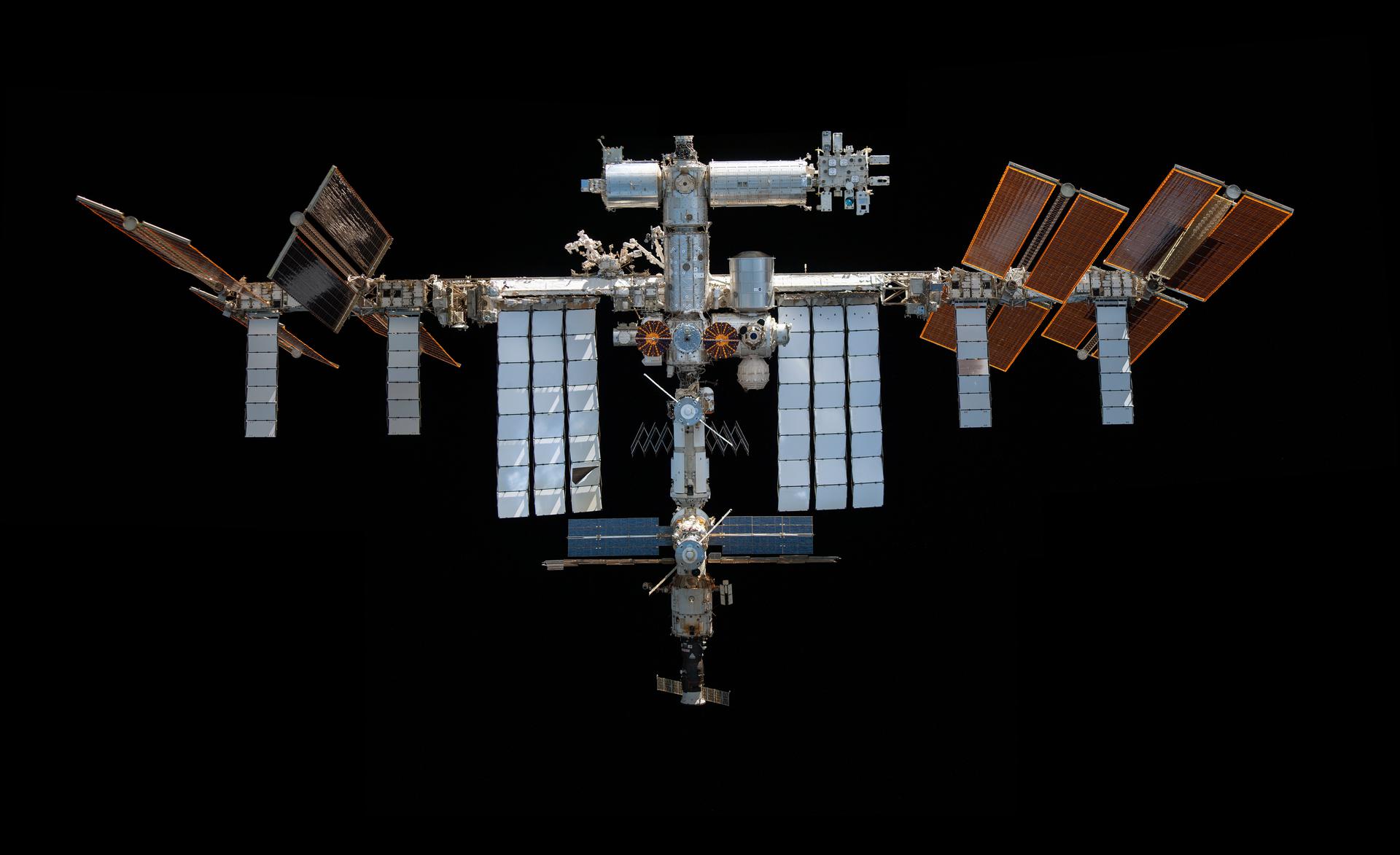
Most importantly, the entire habitation system is highly constrained by any transportation vehicles’ mass and volume limitations. In order to build a large, robust and diverse ecosystems of Space Architecture, the assembly will always be required.
The International Space Station (ISS) is the best example of this modular approach to Space Architecture and includes a myriad of systems. The ISS has served as a Low Earth Orbit (LEO) laboratory and home for human space exploration for more than 20 years. The ISS is made up of 16 pressurized modules: six Russian modules ( Zarya, Pirs, Zvezda, Poisk, Rassvet, and Nauka), eight US modules ( BEAM, Leonardo, Harmony, Quest, Tranquility, Unity, Cupola, and Destiny), two Japanese modules (the JEM-ELM-PS and JEM-PM) and one European module (Columbus). The ISS also consists of structural trusses, thermal radiators, docking ports, solar arrays, experiments, robotic arms and other systems which make up this highly engineered ecosystem.
A habitat can include many of these types of infrastructure as well. Infrastructure for a single habitat can include a utility system such as a solar array that provides power and this requires a support structure that can be mounted directly to the pressure vessel. The frame or truss then distributes the loads from the array as well as the power supply and control systems. The power generation and supply system powers everything within the habitat from temperature control to advanced life support equipment. Within the habitat, a large amount of heat can be produced by its inhabitants and the equipment needed for operations. There needs to be a way to reject much of this heat and that is achieved through the use of external radiators which are supported by the pressure vessel structure. These are just two types of systems used in the design of a space habitat but both systems play a critical role in ensuring that habitability and other systems remain viable. The Space Architect is required to bring all of these systems together that include Power, Thermal, Communications, Guidance, Navigation and Control, Life Support, Structures, Mechanisms, Radiation, Crew Systems, Accommodations, Excercise, and Health, all working together to support the human element.
The International Space Station (ISS) is the greatest example of space architecture and infrastructure that uses a variety of technologies. Some of the key elements and technologies include:
Robotics: Robots were used extensively during the construction of the ISS to handle and assemble large components in space. The Canadian-built robotic arm, known as Canadarm2, was used to move and position large components during assembly.
Extravehicular activity (EVA): Astronauts performed spacewalks to assemble and maintain the ISS, wearing special suits designed to keep them alive in the vacuum of space.
Docking systems: The ISS uses a variety of docking systems to connect different modules and vehicles. The Russian-built Androgynous Peripheral Docking System (APDS) and the US-built Pressurized Mating Adapter (PMA) are two examples of docking systems used on the ISS.
Thermal control systems: The ISS must be able to regulate its temperature to protect the crew and equipment from the extreme temperatures of space. The ISS uses a variety of thermal control systems, including radiators and thermal blankets, to regulate its temperature.
Radiation protection: Space habitats must be designed to protect inhabitants from the high levels of radiation present in space, which can cause cancer and other serious health problems.
Environmental Control and Life Support System (ECLSS): This system is responsible for providing air, water, and waste management for the crew. It includes systems for air and water recycling, carbon dioxide removal, and temperature and humidity control.
Exercise Equipment: To help maintain the physical fitness of the crew, the ISS is equipped with various exercise equipment such as treadmills, stationary bikes, and resistive exercise devices.
Power systems: The ISS must generate its own power to run systems and equipment. The ISS uses a combination of solar panels and batteries to generate power.
Communications systems: The ISS must maintain communication with ground control and other spacecraft. The ISS uses a variety of communications systems, including radios and antennae, to maintain communication.
Computer systems: The ISS uses a variety of computer systems to control and monitor systems and equipment.
Solar power: The ISS is powered by large solar panels that convert sunlight into electricity.
Propulsion: The ISS uses a variety of propulsion systems to maintain its orbit, change its orientation, and make adjustments to its altitude. The main propulsion system is the Russian-built Service Module’s propulsion system.
These are some of the major technologies that are used to build the International Space Station, and they are crucial to the survival and success of the station and the missions that take place on it.
As a Space Architect, the environment and end-use are two of the most critical considerations at the beginning of the architecting process. The environment for which the architecture is being designed drives the ultimate design decisions that affect everything from mission architecture to how the crew will operate within the habitat. The environment also offers unique opportunities that can be leveraged for resources or conditions that make a mission viable.
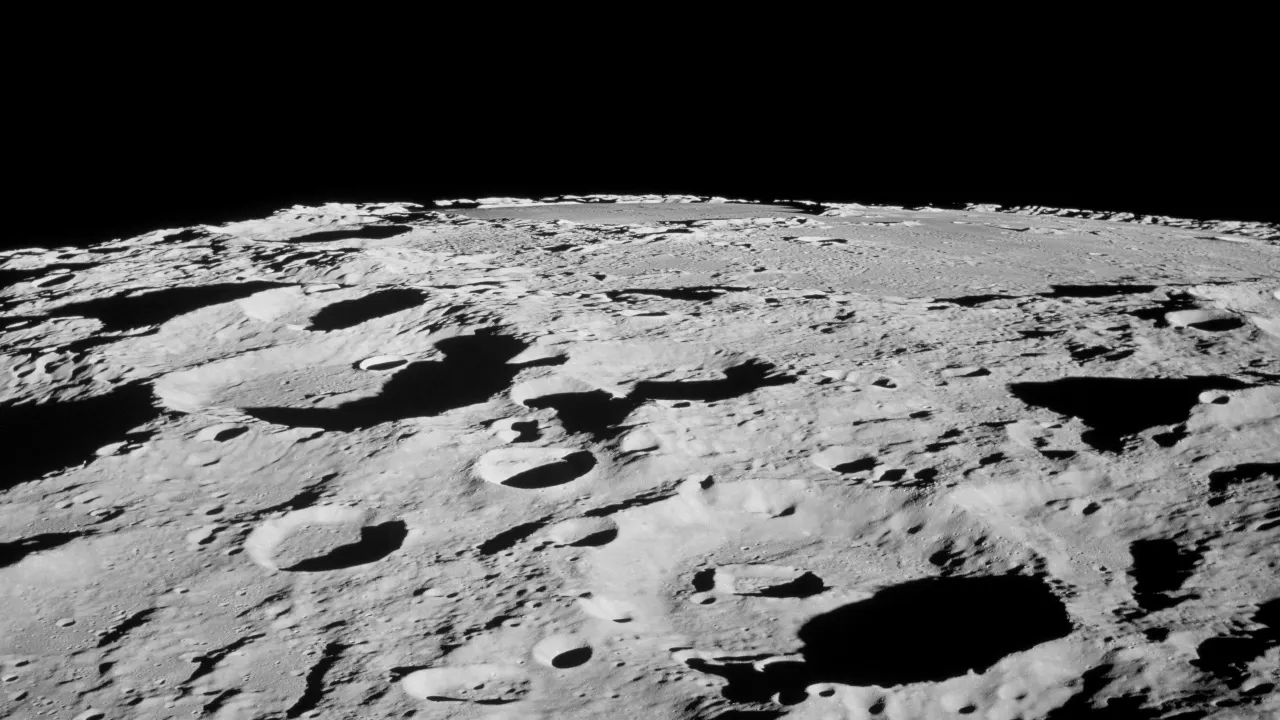
The environment on the Moon for example is extremely harsh and inhospitable for human life. The surface of the Moon is constantly bombarded by cosmic radiation and micrometeoroids, and temperatures can range from extremely hot during the day to extremely cold at night. The Moon has no atmosphere, no magnetic field, and no protection from solar radiation. The surface of the Moon is made up of a fine, powdery regolith, which is created by the constant bombardment of micrometeoroids. This regolith is composed mostly of small fragments of rock, mineral, and glass, and is covered in a layer of fine dust that is easily kicked up by movement. The surface is also marked by impact craters, mountains, valleys, and large expanses of flat plains.
There is no liquid water on the surface of the Moon, and it is extremely dry and arid. The Moon has no weather or climate, and the surface is constantly bombarded by solar radiation, which can cause surface temperatures to reach up to 127 °C (260 °F) during the day and drop to as low as -173 °C (-280 °F) at night. Overall, the environment on the Moon is extremely hostile to human life, and it would require significant technological advances to create a habitable environment on the lunar surface. Mars has a thin atmosphere, composed mostly of carbon dioxide, that is not thick enough to support human life. The atmospheric pressure on the surface of Mars is about 100 times less than that on Earth. Mars also has no magnetic field, which means that it is not protected from solar radiation.
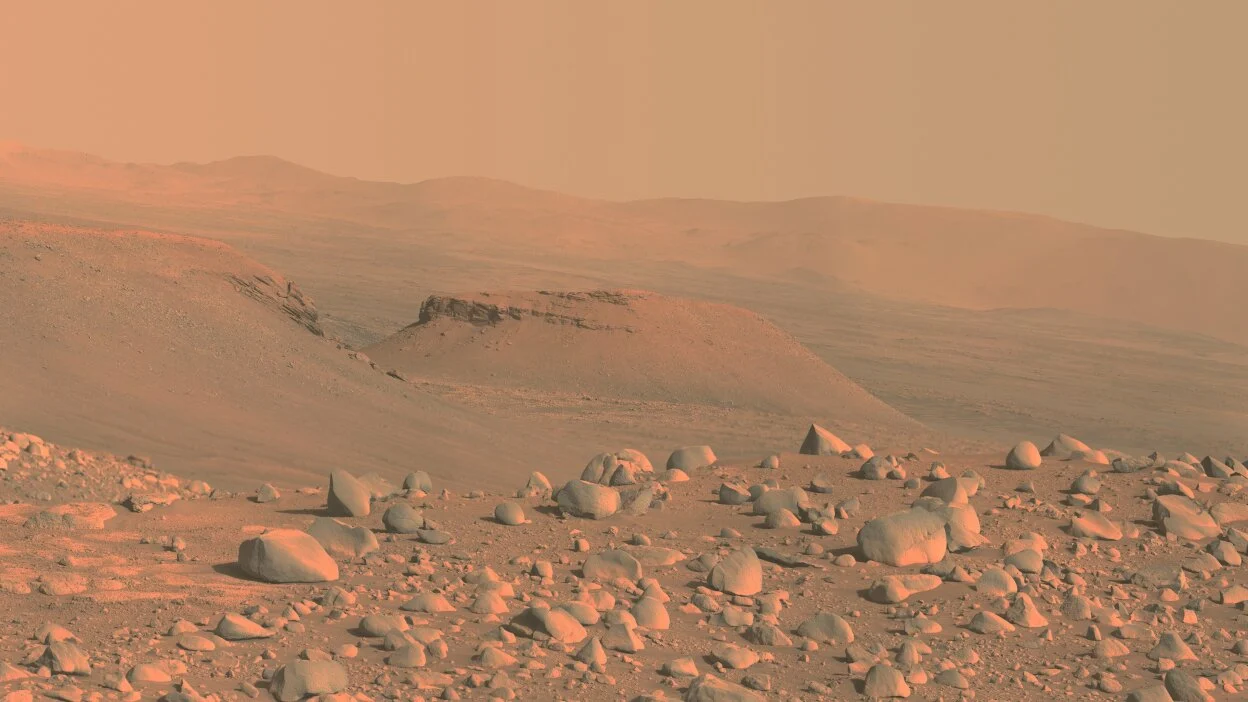 Mars Surface – NASA Perseverance Rover, 3 April 2023
Mars Surface – NASA Perseverance Rover, 3 April 2023
The surface of Mars is covered in a layer of fine dust and sand, which can be easily kicked up by movement and is a major concern for any equipment or human missions on the planet. The surface is also marked by impact craters, mountains, valleys, and large expanses of flat plains. The temperature on Mars can vary greatly, depending on the location and time of day. At the equator, temperatures can reach up to 20 °C (68 °F) during the day and drop to as low as -125 °C (-195 °F) at night. At the poles, temperatures can drop as low as -153 °C (-243 °F). Water is present on Mars in the form of ice, and scientists believe that liquid water may exist underground. However, there is currently no evidence of liquid water on the surface of Mars.
Overall, the environment on Mars is not suitable for human life without significant technological advances to create a habitable environment. However, it has a lot of resources that can be useful for future human colonization and exploration, such as water ice and carbon dioxide which can be used to produce oxygen and rocket fuel. Additionally, the proximity and similarity to Earth’s environment make Mars an attractive target for future exploration and study of the potential habitability of other planets.
The end use also sets establishes the requirements of the system since they are being designed, engineered, and built to support human activities. On the ISS, some of these activities have included everything from scientific research and technology development to tourism. Scientists on the ISS study the effects of microgravity on plants and animals, as well as to develop new techniques for growing food in space.
Microgravity, or the condition of weightlessness, has a number of negative effects on the human body. These effects include loss of bone density, leading to osteoporosis and an increased risk of fractures, loss of muscle mass and strength, changes in blood flow and fluid balance in the body that can lead to changes in blood pressure and heart rate, vision impairment, changes in the immune system and an increased risk of infections and other health issues, psychological and behavioral effects such as isolation, confinement, and stress. Studies have shown that long-term exposure to microgravity can have severe effects on the human body, but more research is needed to fully understand the impact of long-term microgravity on human physiology and physiology. For this reason, exercise and health equipment and technologies will be critical elements in a habitat architecture for any destination, LEO, Moon or Mars.
The microgravity conditions on the ISS allow scientists to study the behavior of materials in a way that is not possible on Earth. For example, scientists can study the behavior of delicate crystals and alloys in microgravity, which can help to improve the design of materials for use in space and on Earth. One of the main areas of research in physics on the ISS is fluid dynamics. The lack of gravity on the ISS allows scientists to study the behavior of liquids and gases in a way that is not affected by the forces of buoyancy and convection that are present on Earth. This can help to improve the design of fuel tanks, rocket engines, and other systems that rely on fluid flow.
Humans going back to the Moon is a goal that several countries and private companies are currently working on. The main goals of going back to the Moon include scientific research, technology development, commercial activities, and international cooperation. Space architecture plays a crucial role in achieving these goals by providing the necessary infrastructure and support systems for human life and activities on the Moon. One of the main activities that humans will conduct on the Moon is scientific research. The Moon’s unique environment and proximity to Earth make it an ideal location for studying the effects of 1/6th earth’s gravity, radiation, and other space-related phenomena on living organisms, materials, and systems. The Moon is also rich in resources such as water ice and rare-earth metals that can be used for scientific research and future space exploration.
Going back to the Moon will help to drive a new space economy, that accelerates the invention of new technologies needed for future space exploration, such as new propulsion systems, robotics, and advanced life support systems. Commercial activities such as mining, manufacturing, and tourism will also be conducted on the Moon. Space architecture plays a crucial role in this by providing the necessary infrastructure and support systems for technology development and testing.
Overall, space architecture plays a crucial role in achieving the goals of humans building a sustainable presence beyond Earth, whether it’s in Space, the Moon, or Mars. It is the most essential part of ensuring that humans can live and thrive in the extreme conditions found outside of our Earth and contributes to the advancement of science and technology that will pave the way for new forms of Architecture, off-world settlements and the future of human space exploration.[/vc_column_text][/vc_column][/vc_row]

